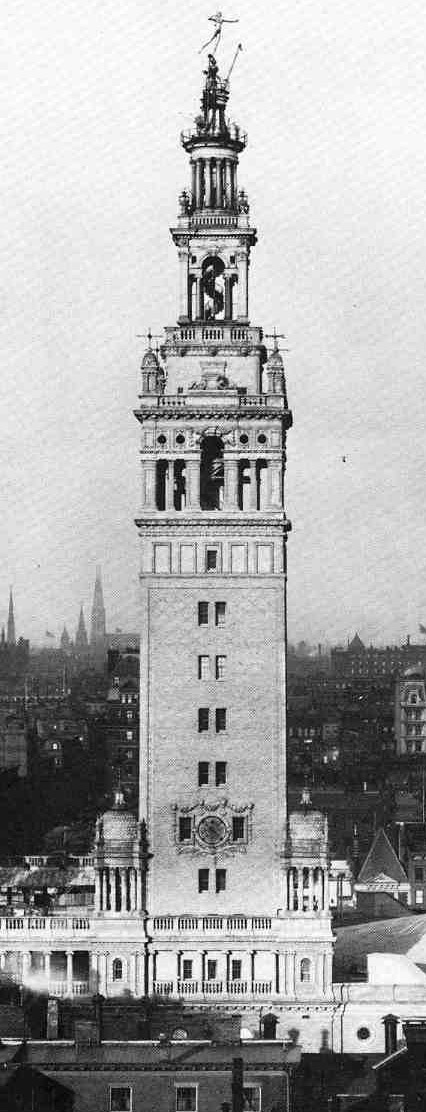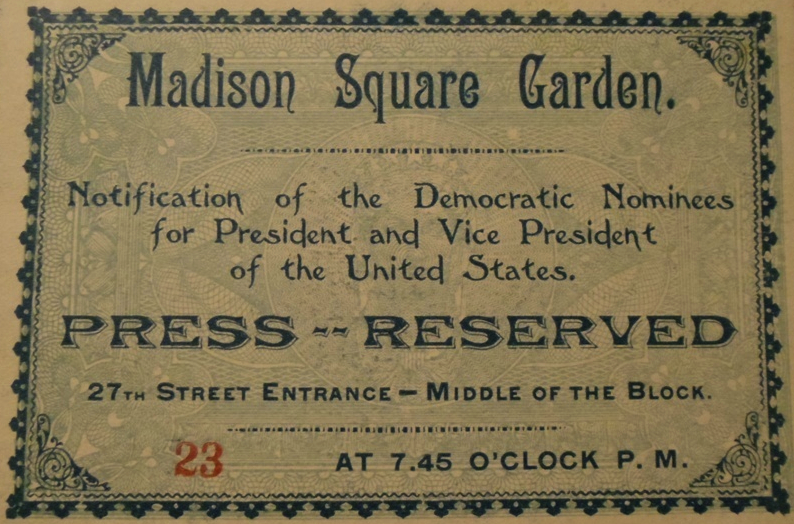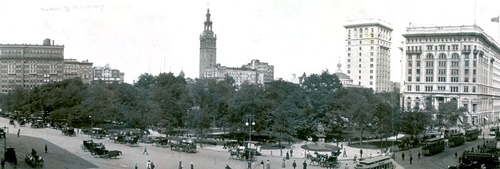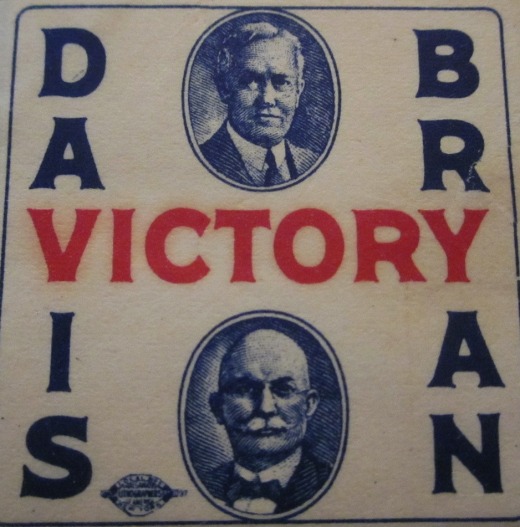Following yesterday's post, it's appropriate to take a look at a tidbit of MSG's political history in New York -- an earlier Madison Square Garden that is, the one that was actually located in Madison Square once upon a time...
Originally built by renowned architect Stanford White in 1890, MSG stood for 35 years on the north-east corner of the Madison Square Park at the present site of the New York Life building. With its moorish design and 32 story tower, it was a commanding presence and was at the forefront of sporting, social and political events in the city (story is continued below picture).

MSG gained infamy when its architect was gunned down by Harry Thaw in 1906. Stanford White, who was a notorious playboy, had dated Evelyn Nesbit when she was just 16 and he was 47, a staggering 31 year age difference that was frowned upon, even in the freewheeling late Victorian era. When Nesbit later became Thaw's wife, Thaw became extremely jealous and insecure about the former romance and proved to be mentally unbalanced: the night of June 26th, 1906, he tracked down White at a dinner party and exclaimed to him "you ruined my wife" before shooting him in the head three times. Dying in one of his most revered buildings was almost a poetic coincidence, but White's untimely demise went unavenged as Thaw got off on grounds of insanity. This story was later retold in the film "The Girl in Red Velvet Swing", available on Netflix.
There was another event that took place at the original MSG that is almost equally notable, at least amongst political junkies: the 1924 Democratic Convention, which still holds the record as the longest, most drawn out political convention deadlock in US History.
Democrats sensed an opportunity to take back the White House when the scandals of the Warren Harding administration leaked out following his sudden death. However, the party delegates just couldn't seem to coalesce around one candidate. Frontrunners William McAdoo and Al Smith engaged in a a war of attrition in the balloting process, which lasted 17 days in July. In an era when most conventions ended before the 40th ballot, this convention remained deadlocked until the 103rd ballot. Each night would run into the wee hours and at times the vote became so contentious that fist-fights even broke out on the convention floor. The intraparty wrangling received national attention and with each passing day the hope for a Democratic victory against Calvin Coolidge shrank. In the end, neither Smith nor McAdoo received the nomination -- after the 96th ballot a dark horse finally emerged as a compromise, John W. Davis, a Wall Street lawyer who was generally well-liked but would prove disastrous.

Unfortunately for Davis, his candidacy was doomed from the start. Perceived to be too conservative, many democrats defected or joined the ranks of the progressive candidate, Robert LaFollette, a more liberal alternative who thew his hat in the ring just after the convention. With a split democratic party, Calvin Coolidge won an overwhelming victory.
MSG suffered the same fate as Davis. The following year New York Life tore it down because of its financial distress. While the building no longer graces New York's skyline, the below view from the Flatiron Building shows the park with MSG at the center. The ever popular "Shake Shack" would come to Madison Square decades later.

